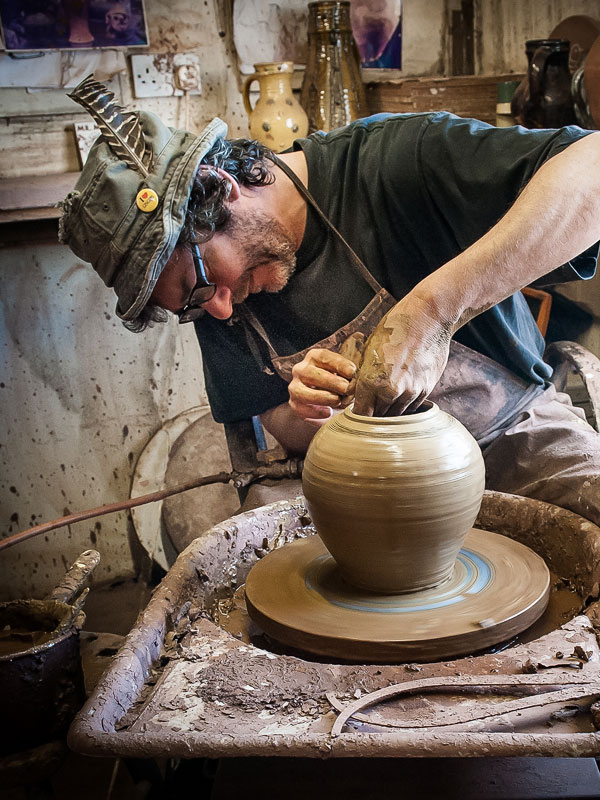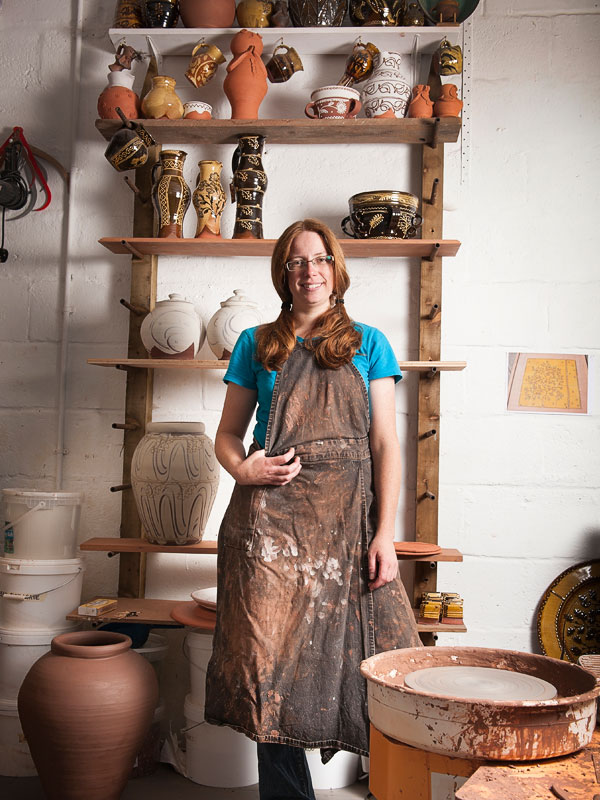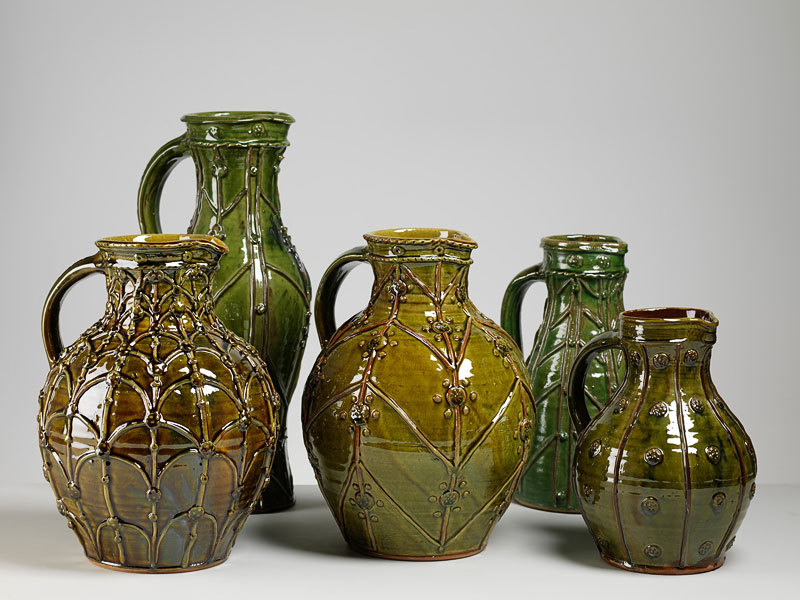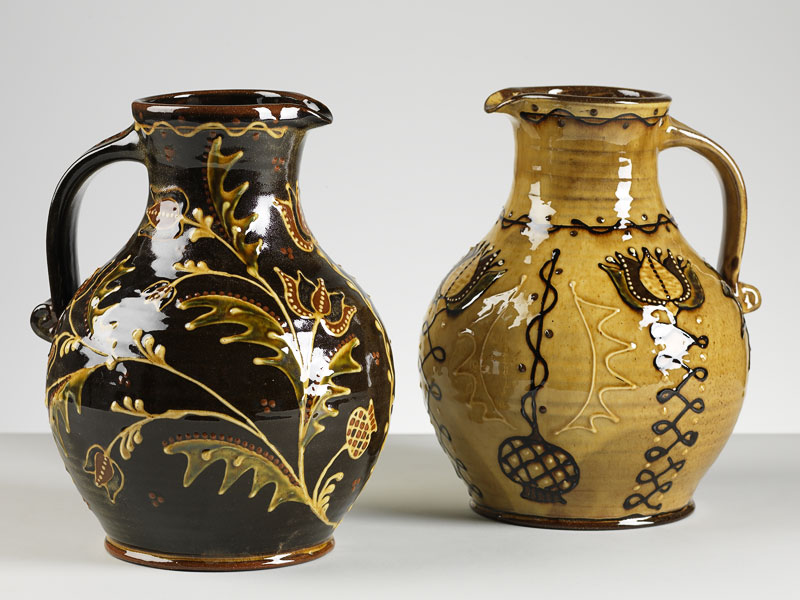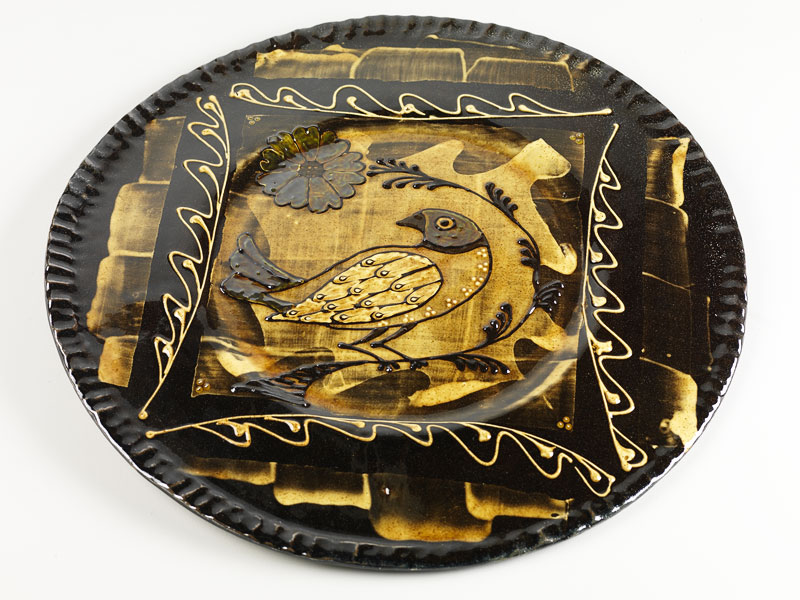Douglas Fitch and Hannah McAndrew
A Love Affair with Clay
28 November 2015 to 16 January 2016
The Leach Pottery presented an exhibition of new work by fellow slipware potters Douglas Fitch and Hannah McAndrew. Both long established in their field, they have exhibited and lectured together in Japan and throughout the USA.
In 2013 they became partners both in business and in love, and were married in May of 2015, to the delight of the British pottery community. They now share their time between Hannah’s studio in a quiet corner of rural Galloway, Scotland, and Douglas’ studio in mid Devon.
‘Before Hannah and I got together we had been best friends for years’ says Douglas.
‘We had been to the States together to do demonstrations, made numerous pots in each other’s workshops, fired wood kilns together, looked out for each other, and talked to each other about slips and glazes and brown pots and Isaac Button and medieval jugs in the V&A.
A couple of years ago I came to Scotland to visit her. She had made a jug which was sitting there on the shelf. When I looked at it I could see a culmination of influences, but more than that, I could see a synthesis of the two of us. Upon seeing that pot it struck me that we had grown together so much in our work because we had grown together so much in our lives ’.
Sharing studio space and materials, Douglas and Hannah work in red earthenware, using the traditional techniques of slip trailing, sgraffito and wood firing, to create a contemporary range of pots decorated with a limited palette of coloured slips and rich honey glazes.
Having developed their practice from similar influences, their works are nevertheless clearly distinct from one another. The essential elements of Hannah’s work come from her love of pots with a purpose, pots for use in the
kitchen or at the dining table. Her pieces take their influence from English country pottery and medieval earthenware, and draw on the rich heritage of British slipware.
Douglas’ pots, predominantly large jugs, are thrown on the wheel and simply decorated with appliqué decoration or sgrafitto, using traditional slips made from local materials. They too draw influence from the work of the medieval English potters and the tradition of slip decorated
pottery prevalent in this country until the early 20th century.

